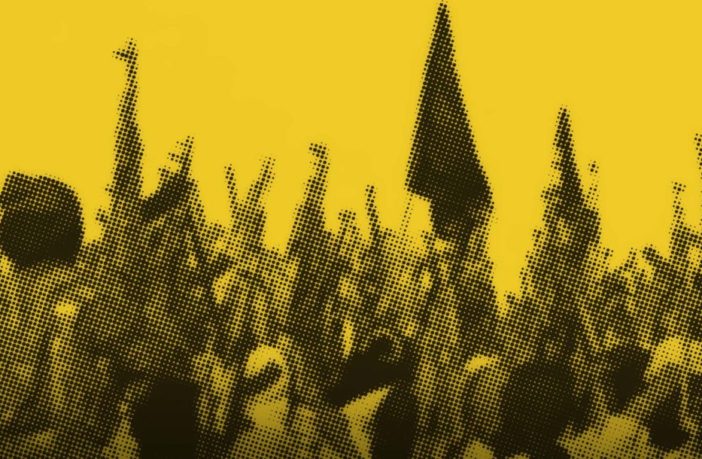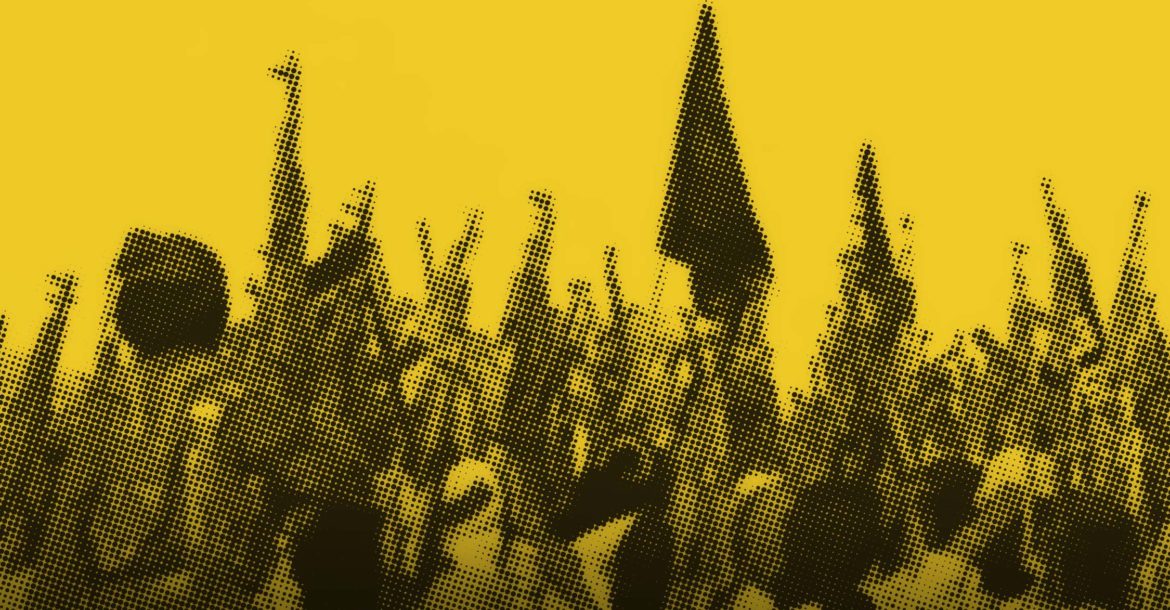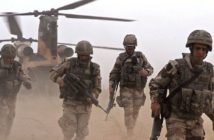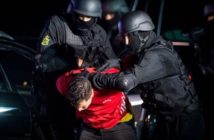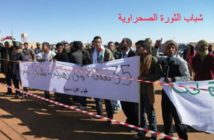The Defense Post
Islamic State recently began to attribute attacks in the Sahel to its West Africa Province affiliate. Robert Postings asks: what does this mean for Islamic State in the Greater Sahara?
Starting in May, Islamic State began to attribute insurgent activities in the Mali-Burkina Faso-Niger tri-border area to its West Africa Province affiliate. This region is far to the west of ISWAP’s normal operational area around Lake Chad, but rather than a westward expansion by that Nigerian-led group, these claims appear to represent the promotion of the actions of the Islamic State in the Greater Sahara under the West Africa Province brand. ISIS finally recognized ISGS as a local affiliate years after its leadership first pledged bayat to Abu Bakr al-Baghdadi.
Experts told The Defense Post that ISIS has grouped ISGS with the Wilayah of West Africa, but that doesn’t mean there is a definitive link between ISGS and ISWAP, and there remains the potential for ISIS central to give ISGS control of its own province.
From MUJAO to ISGS, or a potted history of ISIS in the Sahel
ISGS was founded in mid 2015 by Adnan Abu Walid al-Sahrawi. Believed to be from Western Sahara, Sahrawi (also spelled Sahraoui) had been involved in Islamic militancy for years, and was spokesperson for MUJAO, the Movement for Oneness and Jihad in West Africa. When MUJAO merged with Mokhtar Belmokhtar’s al-Mulathameen (the Masked Ones) in 2013, Sahrawi remained a senior commander in the new al-Mourabitoun (The Sentinels).
Al-Mourabitoun is an al-Qaeda-linked group based in northern Mali, but it has carried out attacks in other countries in the region, often working with other jihadist groups including al-Qaeda in the Islamic Maghreb, which was born in Algeria but operates across the Sahara and Sahel.
Al-Mourabitoun was responsible for several deadly attacks on hotels including the November 2015 attack at the Radisson Blu hotel in Mali’s capital Bamako that left 22 people dead.
In May 2015 Sahrawi pledged allegiance to ISIS leader Baghdadi in a message sent to the Mauritanian news agency Al Akhbar, saying the bayah was on behalf of the entirety of al-Mourabitoun, a claim that Belmokhtar disputed. Sahrawi split from al-Mourabitoun along with some fighters to form Islamic State in the Greater Sahara and there were reports of clashes between the two groups around that time.
Separately Al-Mourabitoun in 2017 merged with several groups, including Ansar Dine and the Sahara branch of AQIM to form the Support Group for Islam and Muslims (JNIM), which is al-Qaeda’s Mali branch.
Apparent difficulties in forming effective lines of communication between ISGS meant there was little or no functional relationship between the two. Sahrawi’s group operated unilaterally while maintaining that it was acting in the name of Islamic State, yet there were no official ISIS statements about ISGS activity from 2016 until earlier this year.
ISGS has independently released statements and videos claiming responsibility for around a dozen attacks, often through news agencies such as Al Akhbar. Many more unclaimed attacks have been attributed to the group, and all have taken place in Mali, Burkina Faso and Niger.
Sharawi commands an estimated 425 ISGS fighters, according to an August 2018 report by West Point’s Combating Terrorism Center, although estimates vary.

Fighting foreign forces and ethnic adversaries
ISGS is strongly opposed to foreign involvement in the Sahel and has carried out several attacks on foreign forces. France, the former main colonial power in Western Africa until the 1960s, is a major focus for ISGS, with the country singled out in propaganda and its forces targeted. In April 2018, ISGS abducted a teacher in the Soum region of Burkina Faso for instructing in French, and in a statement to AFP shortly after the attack an ISGS spokesperson threatened those who taught in French.
Through Operation Barkhane, France maintains an active counter-terrorism force of around 4,500 troops in the Sahel that fight various jihadist groups. The deployment’s origins are in the Operation Serval mission that battled a jihadist insurgency which itself exploited a Tuareg separatist uprising that began in Mali in 2012.
There is also a significant ethnic dynamic to the Sahel conflict. ISGS has heavily recruited from the Fulani community and has been blamed for multiple massacres of Tuareg civilians, while two mainly Tuareg militia groups – GATIA and MSA – have been accused of carrying out massacres of Fulani civilians.
GATIA and MSA, who both signed up to the 2015 peace deal with the government, have been major opponents of ISGS and have been backed by French forces and airstrikes.

ISGS reawakens
ISGS quickly went dormant following Sahrawi’s 2015 pledge, and it was over a year later in September 2016 that the group first claimed responsibility for an attack. In a message sent to Al Akhbar, ISGS said its fighters attacked a post on Burkina Faso’s frontier with Niger, killing a civilian and a border guard.
ISGS soon claimed responsibility for a second attack in the same way, an October 2 assault on a Burkina Faso military outpost in the town of Intangom near the border with Mali that killed three soldiers. A failed jailbreak at Koutoukale high-security prison in Niger on October 17 was also claimed by ISGS.
Shortly afterwards, Islamic State central issued its first statements about ISGS, recognizingSharawi’s pledge of allegiance via the Amaq propaganda agency and in the weekly Al-Naba newsletter in late October 2016, some 17 months after he originally made it. Amaq also released a short video showing Sahrawi and a group of fighters pledging allegiance to Baghdadi.
It appears ISGS then lost communication with ISIS central for an extended period. Al-Naba occasionally summarized news articles about ISGS activities, and ISGS released content independently, but there were no further releases by ISIS central.

ISIS adds Greater Sahara to West Africa
That changed on March 22 this year, when ISIS released a picture showing a group of seven militants in Burkina Faso, although the photo appears to have been taken in December 2018. It made no mention of ISGS, with the picture attributed instead to Wilayah West Africa.
A few days later on March 28, two pages were dedicated to ISGS in edition 175 of Al-Naba, including claims of responsibility for a number of older and more recent attacks. These included the infamous Tongo Tongo ambush in Niger in October 2017 that killed four U.S. and several Nigerien soldiers, an SVBIED attack on French forces in Mali in March 2019, and the abduction in Burkina Faso and later killing of Canadian geologist Kirk Woodman in January.
Al-Naba included background on the conflict in the Sahel, including mentioning GATIA/MSA and Tuaregs. It also stressed ISGS’s opposition to foreign forces, particularly those from France, suggesting ISIS is aware of the nature and specifics of the conflict.
Amaq released a video on April 3, the first to feature combat in Mali, apparently showing an ambush of French forces in the Mali-Niger border area. Subsequently some ISGS attacks have been claimed by ISIS either in statements or through Al-Naba.
Finally, in his April video, ISIS leader Baghdadi specifically mentions Adnan Abu Walid Sahrawi and notes pledges of allegiance from Mali and Burkina Faso, calling for them to “intensify their strikes on Crusader France and its allies.”

Renewed communication between ISIS central and ISGS
The reconnection of ISGS with ISIS, the latter reporting on insurgent activities in the Sahel, and the recognition of Sahrawi by Baghdadi appears to have had an effect.
Armed Conflict Location and Event Data Project researcher Héni Nsaibia told The Defense Post that he thinks “the re-established connection has translated into action on the ground.”
A recent series of attacks apparently carried out by ISGS supports this idea.
In a statement issued on May 16, ISIS claimed responsibility for two attacks in Niger.
The first was a May 13 attack that ISIS said was “in the vicinity” of Koutoukale prison, a high-security facility that holds members of various militant groups, including ISGS and ISWAP. The apparent prison break was foiled, and although one Nigerien national guard junior officer later died from his injuries, but it could have been much more deadly: an unexploded SVBIED was found nearby.
The second was an ambush near Tongo Tongo a day later on May 14 that left 28 Niger soldiers dead.
Since the photo of fighters in Burkina Faso was published, subsequent statements and images issued by ISIS about ISGS activities have all been attributed to West Africa Province.
While ‘West Africa’ suggests a broad geographic reach, the capabilities and nature of the ISWAP group means attacks have mainly been limited to the Lake Chad area of eastern Niger, western Chad, northern Cameroon and northeastern Nigeria, with the overwhelming majority of attacks in Nigeria.
Previously, ISIS activity in the geographic Wilayah of West Africa was carried out by a single group – Jama’at ahl al-sunna li-Da’wah wa-l-qital wal-Jihad, better known as Boko Haram. The group’s leader Abubakar Shekau pledged allegiance to ISIS in March 2015 and it became Islamic State West Africa Province.
In late 2016 the group split into two after ISIS replaced Shekau as leader. One faction remained loyal to Shekau while the other ISIS-recognized faction was led Abu Musab al-Barnawi. Another ISIS-decreed leadership change occurred in March when Abu Abdullah Ibn Umar al-Barnawi was reportedly appointed the new governor of the Wilayah of West Africa.
A future Islamic State Sahel Province?
Although ISGS attacks are attributed now to the Wilayah of West Africa, ISGS likely remains operationally independent of ISWAP, and not under the command of the ISIS appointed governor for the province.
Jacob Zenn, assistant professor Violent Non-State Actors in World Politics at Georgetown University told The Defense Post that he thinks this “is more of a branding issue then an actual merger.”
“That ISIS has grouped ISGS under the West Africa Province has been explicitly articulate,” Nsaibia said, while also stressing that he doesn’t believe this “should be conflated with subordinating ISGS as a group under the command of ISWAP.”
But while seemingly remaining separate, there are potential connections between the two groups.
“I do think that links have been developed between ISGS and ISWAP,” Nsaibia said.
“There’s been circulating reports that point to ISGS members being dispatched toward the Nigerian border,” he said, but stressed there is “still there is no solid evidence that corroborates these reports” and that “there is a lack of more concrete reporting to confirm such a hypothesis.”
Dr. Jason Warner, Assistant Professor of Social Sciences at West Point, said he believed “there has been at least some minimal interaction between the groups” though he added that ISGS attacks attributed to the Wilayah of West Africa were “more of a branding exercise by IS Central than it is evidence of any deep or meaningful links between the two groups.”
Despite the differences between ISGS and ISWAP, operating in different areas with different local dynamics, and the limits of current links between them, ISIS decided to group them together, attributing ISGS attacks to the Wilayah of West Africa. It is possible that, because ISGS activities are still within West Africa, it makes sense for ISIS to incorporate them into the pre-existing Wilayah.
In addition, Zenn suggested the potential unreliability of ISGS may also have been a factor in ISIS incorporating them in Wilayah of West Africa, as opposed to creating a new region for the group.
“There have always been troubles with the IS-ISGS relationship, including skepticism about whether al-Sahrawi was in the IS relationship for money and therefore not trustworthy or whether he would return to the AQ fold, and there were issues maintaining communications with him,” Zenn said.
Other ISIS affiliates have taken a hardline stance against al-Qaeda through propaganda or in open fighting, but ISGS has been different with suggestions it is in communication with Al-Qaeda-linked groups in the Sahel and potentially even co-operating.
This could be a concern for ISIS, though Nsaibia said that “ISIS are aware (to a certain extent) of the local specificities and dynamics, and probably more pragmatic with regard to this context.”
For the time being, ISIS appears to have opted to place ISGS, at least for publicity purposes, in the Wilayah of West Africa, but recent restructuring of ISIS provinces leaves the possibility of more changes in Africa.
In July 2018, ISIS upgraded its affiliate in East Asia to a full Wilayah. Later that year ISIS merged multiple Wilayah in countries that contained more than one – such as Syria, Iraq, Yemen, and Libya – into a single entity covering the entire country.

Islamic State Central Africa Province was confirmed in April 2019 after ISIS attributed an attack on Congolese soldiers at Kamango in the Democratic Republic of Congo to it. In the video released in April, Baghdadi is seen looking over documents covering various ISIS provinces, including the never-before-mentioned Wilayah Turkey, although ISIS has not yet claimed any attacks in this apparent new province.
Most relevant, ISIS this month split its long existing Wilayah Khorasan. A statement released on May 10 attributed an attack in Indian-controlled Kashmir to Wilayah al-Hind, while two May 15 releases attributed attacks in Quetta to Wilayah Pakistan. Previously attacks in these locations would have been placed in Wilayat Khorasan, which now appears to have been reduced to just Afghanistan.
Years after Sahrawi first pledged allegiance, ISGS activities are finally and reliably being recognized by ISIS. The central leadership appears to have decided – for the time being at least – to place ISGS activities in the Wilayah of West Africa for propaganda purposes, but with no clear evidence to support a merger or subordination, ISGS likely remains operationally independent from the ISWAP group.
The fact that ISIS has been carrying out major restructuring in its global operation, both splitting and merging provinces means there is the potential that ISGS could be given control of its own province in the Sahel. Such a move would likely require ISGS to maintain its operational activity and continue communications with ISIS.




